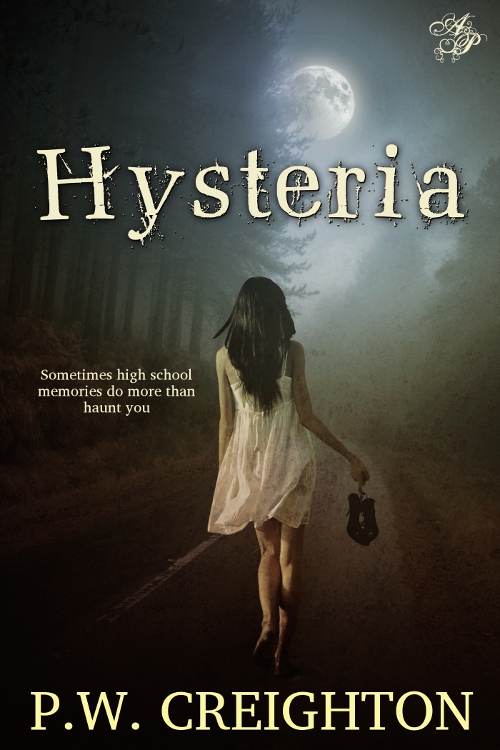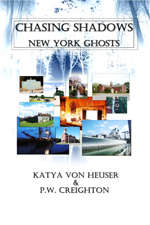The Best Voice Recorders For Ghost Hunting And EVPs
 Thursday, August 16, 2012 at 1:47PM
Thursday, August 16, 2012 at 1:47PM 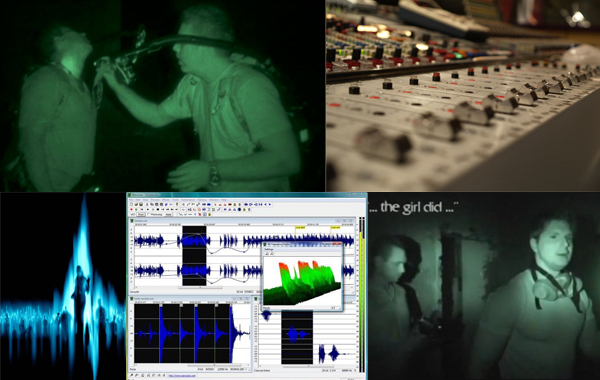
The EVP
When it comes to field research, voice recorders are un-avoidable, they're needed to record witness interviews, field notes, and of course the EVP or Electronic Voice Phenomena. An EVP is an electronically generated noise that resembles speech, but are supposedly not the result of intentional voice recordings or renderings. Basically, voices that are not from natural sources.
EVPs and other Audio phenomena are what many ghost hunters and paranormal investigators rely on today to validate claims of paranormal phenomena at a site but many really do not understand the principals of audio or know what their devices are capable of in the field. Not every voice recorder is the same and just like cameras or camcorders, the different features can make all the difference.
History:
The Spiritualism Movement in the 19th century gave rise to the phenomena of Spirit Photography, essentially capturing ghosts on film but new technologies of the era including photography were employed by spiritualists in an effort to demonstrate contact with a spirit world. So popular were such ideas that Thomas Edison was asked in an interview with Scientific American to comment on the possibility of using his inventions to communicate with spirits. He replied that if the spirits were only capable of subtle influences, a sensitive recording device would provide a better chance of spirit communication than the table tipping and ouija boards mediums employed at the time.
As sound recording became widespread, mediums explored this technology to demonstrate communication with the dead. Photographer Attila von Szalay was among the first to try recording what he believed to be voices of the dead as a way to augment his investigations in photographing ghosts.
He began his attempts in 1941 using a 78 rpm record and later conducted a number of recording sessions with a custom-made apparatus, consisting of a microphone in an insulated cabinet connected to an external recording device and speaker. Szalay reported finding many sounds on the tape that could not be heard on the speaker at the time of recording, some of which were recorded when there was no one in the cabinet. He believed these sounds to be the voices of discarnate spirits.
The term Instrumental Trans-Communication (ITC) was coined by Ernst Senkowski in the 1970s to refer more generally to communication through any sort of electronic device such as tape recorders, fax machines, television sets or computers between spirits or other discarnate entities and the living.
Researchers continued to try various technologies and in 1980, William O'Neil constructed an electronic audio device called "The Spiricom." O'Neil claimed the device was built to specifications which he received psychically from George Mueller, a scientist who had died six years previously. He said that he was able to hold two-way conversations with spirits through the Spiricom device and provided the design specifications to researchers for free.
In 2002 an EVP enthusiast Frank Sumption, created the Frank's Box for supposed real-time communication with the dead, Sumption claims he received his design instructions from the spirit world. The device is described as a combination white noise generator and AM radio receiver modified to sweep back and forth through the AM band selecting split-second snippets of sound. Critics of the device say its effect is subjective and incapable of being replicated, and since it relies on radio noise, any meaningful response a user gets is purely coincidental, or simply the result of pareidolia.
Recording Audio
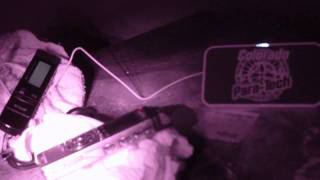 When it comes to fieldwork, recording audio is by-and-large the most difficult to capture reagrdless of what your projects is. If you're shooting a documentary, trying to capture bird calls or just trying to take field notes, recording clear audio can be extremely difficult.
When it comes to fieldwork, recording audio is by-and-large the most difficult to capture reagrdless of what your projects is. If you're shooting a documentary, trying to capture bird calls or just trying to take field notes, recording clear audio can be extremely difficult.
Audio is analyzed and classified according to two primary factors; frequency, reported as a hertz level, and power reported as a decibel level. Many modern recorder attempt to limit external noises in the recorder by applying filters to the microphones so that it will only record in standard frequencies. Companies find the majority of consumers are unhappy with recorders that pick up everything. This is why Ultrasound and Infrasound are typically not recorded with standard recorders.
The Limit for Human Hearing is 20hz to 20,000hz.
Infrasound is any sound below the 20hz limit and is typically linked to paranormal phenomena. Many studies report infrasound as the source of paranormal phenomena due to the physiological effects that persistent infrasound has. Many EVPs recorded through these studies also are documented under the 20hz limit. It is unclear whether the paranormal activity is caused by the presence of the infrasound or the infrasound is caused by the presence of an unknown (paranormal) source.
The best possible practice to record clear audio in the field consists of:
- Setting up the recorder. Many digital recorders have a selection for quality. High quality (HQ) or extra high quality (XHQ), but this also can lead to limiting the audio that you will record. Some recorders apply additional filters depending on the settings restricting the frequencies recorded.
- Choose a location. EVPs can and have been recorded virtually everywhere. You don't need to be in a reportedly haunted location. It is of the highest importance that the user remain still, motionless if possible to limit audio contamination.
- Start the Session. - by stating out loud who you are, where you are, and what time it is. Do NOT whisper. Whispering can lead to false positives during review. Talk in a normal tone of voice. Ask questions. Leave adequate space between your questions to allow the recorder to pick up any possible responses.
- Note ambient noise - As you are recording, try to be very aware of noises both inside and outside of your environment. In everyday life, we have trained our brains to filter out a lot of background noise, but your recorder will pick up everything. So when you are making your recording, be aware of those noises and remark about them so they are not mistaken for EVP.
- Note the End of the Track. - As you finish the track remark the location and time again to estabilish the finish of the recording for analysis.
Audio, EVPs, Analysis and Pareidolia
When it comes to analyzing audio from a paranormal investigation a lot of investigators place immense weight on any audio anomalies, many risk their credibility and still others may actually risk professional credentials.
Unlike other more objective means of documentation, audio is subject to being removed from context and even more subject to pareidolia or matrixing as it is often termed. Pareidolia is a psychological phenomenon involving vague and random stimulus (often an image or sound) that are being perceived as significant.
In-short, since an individual is subject to a prolongued sitimulus, in this case whitenoise-static, the mind begins to percieve patterns where there are no patterns. This is a result of the mind simply trying to make sense of the chaos of static and quite frequently leads many investigators to go overboard attempting to 'clean up' the EVP so that others can hear it.
There are two primary means of analyzing audio recordings, first is to use your own ears through active listening and the second is to utilize a digital program for evaluation. Both methods are heavily dependent on subjective opinion and interpretation.
- Active Listening - Unlike the communications technique, in analysis, active listening requires the analyst to focus intently only on the audio, usually by elminating other stimulus and playing back the audio with noise-cancelling headphones.
- Digital Analysis - This technique requires the analyst to import the audio into a program where the waveform, or spectral form can be viewed and the track manipulated to clarify any audio anomalies.
Regardless of what technique is imployed to analyze the audio it is necessary to have others evaluate the findings to establish some objectivity.
It is important to note that audio analysis is largely subjective, the only element that is neutral and completely objective is your recorder but there are limitations. Standard digital voice recorders have a number of set frequency filters and only record in single channel mono or stereo. Frequency filters are designed to provide noise cancellation on typical recordings but for EVP purposes they eliminate infrasound frequencies and restrict possible recording opportunities. Many digital voice recorders also feature an Auto Gain Circuit that automatically adjusts your recorder's microphone levels. Typically, only a higher quality Field Recorder will permit you to set the recording levels manually.
Best Digital Voice Recorders For Ghost Hunting
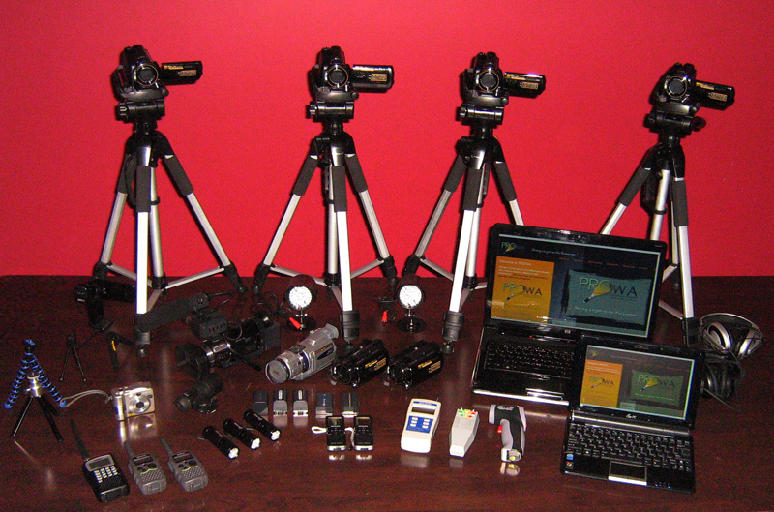 A voice recorder is an essential piece of equipment for every ghost hunting kit but no one can really decide on what is best. Everyone is wondering what is the best possible voice recorder for capturing EVPs. Ghost Hunters tend to use field recorders that cost more than most paranormal teams are capable of generating in a year's worth of fundraisers. Still others rely on personal equipment that they use for professional purposes while the majority of ghost hunters are lucky to purchase a cheapy digital voice recorder from the electronics section at their box giant all the while ghost hunting outfitters are trying to hock equipment to unwitting teams at ridiculous mark-ups.
A voice recorder is an essential piece of equipment for every ghost hunting kit but no one can really decide on what is best. Everyone is wondering what is the best possible voice recorder for capturing EVPs. Ghost Hunters tend to use field recorders that cost more than most paranormal teams are capable of generating in a year's worth of fundraisers. Still others rely on personal equipment that they use for professional purposes while the majority of ghost hunters are lucky to purchase a cheapy digital voice recorder from the electronics section at their box giant all the while ghost hunting outfitters are trying to hock equipment to unwitting teams at ridiculous mark-ups.
So what are some of the best digital voice recorders today?
Cheap digital voice recorders typically avaialble all suffer from frequnecy filters, auto gain circuits and seemingly short life expectancies. The cheaper recorders offer fewer frequency filters but also permit more contamination of the tracks through poor quality microphones. Most recorders in this vein only seem to last for around a hundred hours of record time before dying or suffering microphone malfunctions. The best of these tend to be Sony recorders at around eighty to one hundred dollars. At that price point it is questionable to purchase a standard digital voice recorder for EVP recordings.
Another option for digital voice recorders to use out in the field that provide much more in terms of features and quality are field recorders. A field recorder is a digital voice recorder with a variety of professional features much like there are prosumer and professional cameras there are also prosumer and professional voice recorders.
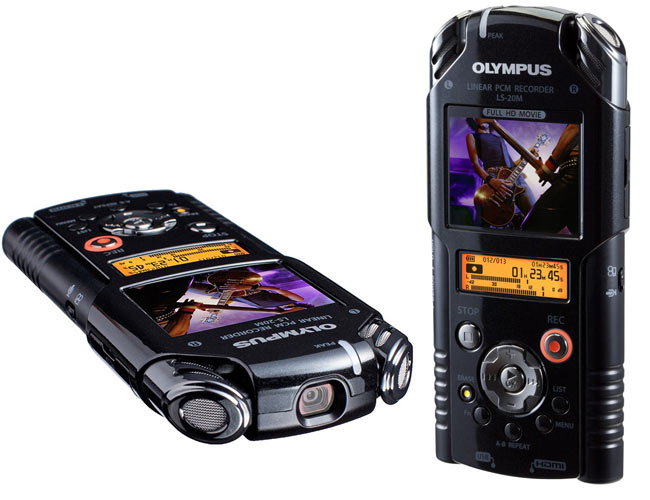
Olympus LS-20M - This Field Recorder, digital voice recorder features dual condenser mics capable of recording 24-bit / 96kHz PCM audio, and a built-in camcorder that can capture full 1080p high-definition video, the LS-20M.
While not a night vision camera, it is important to think of this as a field recorder with the benefit of being a camcorder as well. This particular unit makes it possible to record clear audio with dual channel stereo and a back-up camcorder perfect for interviews. The selectable bitrate and file types keep all of the digital voice recorder/field recorder features while adding the camcorder.
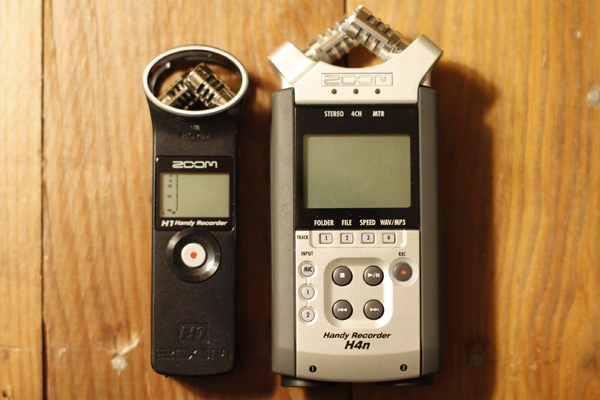 Zoom H1 and H4N - These field recorders feature dual channel XY microphones with dedicated function buttons. Its backlit display features recording levels, file format, time elapsed, remaining battery life and recording time.
Zoom H1 and H4N - These field recorders feature dual channel XY microphones with dedicated function buttons. Its backlit display features recording levels, file format, time elapsed, remaining battery life and recording time.
A common feature of prosumer and professional recorder lies with the controls. All of the controls are on the sides with no menus on the screen. A large record button gives you complete control. Playback and pause, marker, forward and rewind buttons are all accessible by your thumb. Volume for playback and monitoring can be adjusted using your index finger. The H4N features on-board editing controls that allow you to tweak a track fo EVP playback right in the field. All field recorders all allow you to listen through the recorder as it is recording.
Sony PCM-D50 - The PCM-D50 is a 96kHz/24-bit digital field recorder fitted with two-position (X-Y or Wide) stereo microphones, 4GB of internal flash memory and a Memory Stick Pro-HG Duo™ slot. Constructed of lightweight aluminum, this field recorder is built to withstand the demands of professional applications.
This is the digital voice recorder that is currently used by all Syfy channel shows for their EVP sessions.
The field recorder permits users to edit tracks on the unit, adjust input levels, gain and positioning of the microphones. The recorder provides clean sound but also features more concentrated frequenceny filters than other recorders. This is also the single most expensive field recorder of these recomended digital voice recorders for EVP recordings.
This unit does not offer anything more than the Olympus, Zoom or Tascams yet, it does appear to bit a bit more durable than the Zoom recorders.
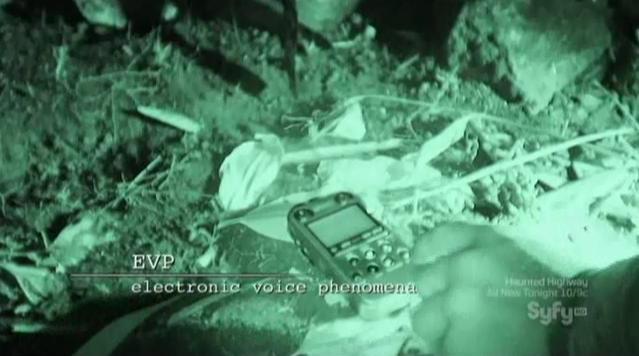
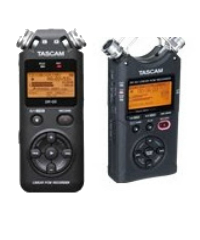 Tascam DR-05 and DR-40 - The DR-05 records in MP3 or WAV format – including 96kHz/24-bit high-resolution audio – to microSD or microSDHC media. A pair of all-new microphones handles up to 125dB SPL with the sensitivity to capture every detail. With new recording features like Peak Reduction and Quick Menu, the DR-05 puts album-quality recording in the palm of your hand.
Tascam DR-05 and DR-40 - The DR-05 records in MP3 or WAV format – including 96kHz/24-bit high-resolution audio – to microSD or microSDHC media. A pair of all-new microphones handles up to 125dB SPL with the sensitivity to capture every detail. With new recording features like Peak Reduction and Quick Menu, the DR-05 puts album-quality recording in the palm of your hand.
The DR - 05 is very similar to the Zoom H1 recorder both in price and in features.
The DR-40 captures up to four tracks from built-in, high-quality condenser microphones, XLR mic or line inputs. The internal mics are adjustable from XY to AB position, helping you to tailor your recording to the sound of the room. A pair of great-sounding TASCAM microphone preamps welcome condenser microphones with phantom power, recording at up to 96kHz/24-bit resolution. It accommodates balanced XLR or 1/4" line inputs using locking Neutrik Combo jacks.
The Tascam units are very similar to the Zoom recorders although the quality of recordings differ due to the variable bitrates available and the compression codecs used by the two companies. Both yield high quality field recorders for EVP recording sessions but the prices may deter some.
Out On A Limb
Just like selecting camcorders for their night vision capabilities, or combining survey equipment with other devices, a number of creative individuals have taken to designing equipment specifically for recording EVPs. The problem is that these devices are either experimental like the PX/Ovilus or they combine too many devices to be effective, while others are simply redundant.
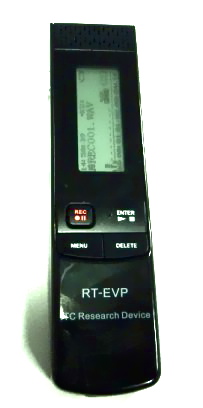 DAS RT-EVP - Interactive digital voice recorder has some new hardware and firmware features, older pre-existing RT's cannot be upgraded. New Features Include: * Increased memory from 4G to 8G * Real Time (viewable) EVP Counter with Numerical Interface Counts and locates EVP's within the saved file. * Allows the user to incorporate Number Interaction as part of their EVP session. Ask a question and watch for a response on a large "0000" Display * Adjustable sensitivity allows the user to separate a Class "A" EVP from a Class "C" EVP.
DAS RT-EVP - Interactive digital voice recorder has some new hardware and firmware features, older pre-existing RT's cannot be upgraded. New Features Include: * Increased memory from 4G to 8G * Real Time (viewable) EVP Counter with Numerical Interface Counts and locates EVP's within the saved file. * Allows the user to incorporate Number Interaction as part of their EVP session. Ask a question and watch for a response on a large "0000" Display * Adjustable sensitivity allows the user to separate a Class "A" EVP from a Class "C" EVP.
Using the AVR (Auto Voice Record) it will tell you if any EVP's have been captured with the corresponding time and file location * Enhanced Audio Amplification * Includes Koss Audio 15Hz isolating earbuds with separate playback volume control. Allows the user to increase the MIC sensitivity and lower the playback volume thus reducing any playback bleed through. * Additional remote MIC included with Left and Right Channel separation capability. may allow the user to determine origin of EVP signal strength.
Devices like the DAS RT-EVP and EVP Field Recorder provide 'the tools paranormal investigators need' but only based on common assumptions held by investigators.
The EVP field recorder is actually only a device that detects audio levels and signals them with LEDs, this is no different than a channel graph on a field recorder. The newer model of the DAS-RT-EVP does host a new set of features more worthy of the price tag but the recording quality is substandard.
When it comes to selecting the best digitial voice recorder for EVPs, it is no different than selecting the best camcorder. You need to answer whether you want something decent that can only be used for ghost hunting or something that you can use any other time. It may be better to pick up an entry level field recorder than to invest in multiple cheap recorders that will likely contaminate results and die within a year or so.
RVPR MKII
The Tascam DR-40 and Zoom H4n along with certain other field recorders permits the creation of a device based off of a device similar to the ROUNTREE VEE PEE RECORDER, and similar devices created by Paul Browning. Using the XLR input jacks and two dynamic microphones it is possible to record using dynamic, electret and even EMF input for capturing all simultaneously on separate tracks that are synchronized. This experimental method of recording drastically increases the chances of capturing EVPs.




